
Global, Dec 21, 2022
Kelsey Rees | CRN/The Channel Company
First published 08 December 2022
How have partners made their businesses more sustainable this year?
We quizzed six UK and European resellers and distributors bosses on what they have done internally to bolster their environmental commitments
Environmental sustainability has grown to become an important boardroom-level priority for many channel companies this year.
However, like many movements in technology, companies are at different levels of maturity with varying degrees of engagement.
Regardless of a firm's ESG pace, customer queries around sustainability are up and look set to increase, driving up the subject's value to decision-makers.
Several partners have also told CRN that private equity buyers asked specifically for details about environmental initiatives as part of their due-diligence before they made an offer.
Recent Gartner figures suggest 87 per cent of business leaders expect to increase their organisation's investment in sustainability over the next two years owing to customer pressures.
The analyst's findings also showed that energy consumption and business travel topped the list of operations-related costs being mitigated through sustainability programs.
To find out what strides channel partners have made in 2022, CRN spoke with six chief executives about how they have become a more sustainable business.
Bob Bailkoski, CEO, Logicalis Group

"We're living and breathing these values.
"In some of our countries around the world we have travel-free months. So in Germany in December, we have a no business travel in the month.
"I myself did a business trip to Germany a few weeks ago, where I took the train all the way rather than flying. It took a bit longer, a few hours longer, but I was so much more productive on the train than I would have been on an aeroplane and the carbon impact was negligible.
"I probably saved around 100 to 150 kilogrammes of carbon by taking the train rather than flying."
Michel Paulin, CEO, OVHcloud
"Thanks to our unique industrial model we are integrated. We build our servers, we design our servers, but also we have introduced new innovations such as water cooling.
"We use 30 to 50 per cent less electricity than our peers.
"Why? Because we have zero air conditioning in our datacentres.
"We don't need air conditioning and so we don't have to set up extra equipment that is using electricity in our datacentres.
"Due to the fact that we use water in our water cooling we use ten times less than our peers.
"Because we use water in a closed model and air conditioning uses a huge amount of water.
"But everybody's talking about operations, which is important. But in reality, with the carbon footprint of the datacentres, more than 70 per cent is coming from the construction of the servers.
"And thanks to the fact we have our own factory, that we build our own servers, we do not use useless components. But also we are able to refurbish all the components. We have a very strong refurbishing practices.
"In each server we integrated our datacentres nearly 30 per cent are refurbished components.
"The carbon footprint of all our new servers is much lower and therefore our datacentre of carbon footprint is I think, and including the scope 3 - nobody's talking about scope 3 as it's very challenging - thanks to the fact that we mastered the factory we can talk about the scope 3
"And now we have set a very ambitious targets for 2025 and 2030.
"We will be net carbon zero on our own operations including the construction by 2025. Net carbon zero on the full scope, including scope 3 by 2030. We will be using 100 per cent renewable energy by 2025."
Mark McLardie, head of ESG, Westcon-Comstor
"The reality is, a lot of our time and energy over the past nine months or so has been around calculating a carbon footprint because we recognise that without having a good understanding of where we're starting it is very difficult to set targets and then measure progress.
"In terms of practical emission reduction initiatives, that's something that we're working on finalising that plan at the moment.
"But the electric vehicle scheme is absolutely a real life way in which we're reducing emissions by helping our employees make that transition away from internal combustion vehicles.
"In terms of renewable electricity, there are most definitely examples whereby energy tariffs have been coming up for renewal."
Jonas Hasselberg, CEO, Proact
"We are already sustainable, of course, and frankly, I think we're helping a lot of our customers to become more sustainable. All that said, we're focused on quite a few things, but we want to be really good at them.
"One is energy efficiency. Clearly that's one of our biggest opportunities, if you will, in terms of becoming more sustainable is to use less energy.
"So there are two aspects. One is to use energy efficient datacentres, meaning that most of the energy spent is to power the equipment, not cooling or other aspects of running the datacentre.
"And then two is the actual platform for running them. So the equipment that we use for our services, to make sure that we use very power efficient and modern designs of our services.
"The other aspect is renewable energy. Above 90 per cent of all our energy is renewable but we want to get to 100 per cent. We should be able to do that in the near future."
Melissa Mulholland, CEO, Crayon
"In Norway we don't have plastic, we don't do water bottles and we've changed out to compostable utensils.
"We have moved our building to the highest energy standards possible."
"Crayon's new headquarters in Oslo achieved the BREEAM-Nor environmental mark of Excellent, meaning it incorporates the latest environmental protection measures.
"During construction, Crayon said it placed great emphasis on circular economy principles.
"This approach minimised overall waste, while also providing a high degree of waste sorting.
"Moreover, the entire building is of flexible construction, using long-lasting, robust materials.
"The building's energy supply is from Nydalen Energi, which supplies heating and cooling from predominantly renewable sources. In addition, solar cells on the roof provide electrical power, so that the entire structure achieves Energy Class A.
"Our building windows in Sweden filters the light in and out so our building can stay at the best possible temperature without using a bunch of heating and air conditioning costs.
"And then all of our furniture is made of recyclable material.
"So we've made a lot of purposeful decisions, including reducing travel. Putting that as part of the culture I think is quite important."
Geoff Kneen, CEO, Content+Cloud
"This is an agenda we spoke about recently at the CEOs meeting in Oslo.
"We had a carbon neutral plan locally for quite a while that we're successfully heading towards as a business in the UK.
"But I think what's interesting about that, as we have looked across the Advania group and embraced the new EU directives that are coming in around sustainability, that's definitely high on our group board's agenda.
"Those directives are excellent in the way that they ask you to consider sustainability in a very holistic sense - going right into your supply chain and how you work with your partners.
"You're not only thinking about your own business but you're thinking about how what you do impacts sustainability across your entire ecosystem into your suppliers and your partners as well.
"Those are two things that have been effective this year, which is one, making the move towards carbon neutral.
"And two, making sure we've got plans in place from the senior management of the Advania group to make sure that we're considering our business holistically from a sustainability perspective and making sure we've got the right targets in place for us to continue that improvement as we go forward."
Related Insights

Global , Dec 10, 2025
Announcement
AI and digital transformation: COP30 signalled a new era for climate action
COP30 in Belém, Brazil marked a turning point for climate action, elevating technology and AI as key drivers of sustainability. Discover how digital innovation, from emissions tracking to AI-powered resilience, is shaping the future of climate strategy and operational excellence.

Global , Dec 8, 2025
What COP30 means for digital transformation and sustainability
COP30 was held in Brazil this year, with much attention focused on adaptation finance and forest protection but for the first time we saw the rise of technology and AI on the agenda.

Global , Dec 4, 2025
Threat Hunters: The front-line defenders in a modern SOC
“Threat hunting isn’t just about locating adversaries; it’s about anticipating their moves, proactively searching for hidden risks, and transforming intelligence into action before a breach occurs, says Gandhiraj Rajappan, SOC Manager at Logicalis Asia Pacific.

Global , Dec 4, 2025
Logicalis Spain awarded Rising Star Consulting Partner of the Year 2025 by AWS
The AWS Regional Partner Awards celebrate top partners in each region who stand out for their specialisation, innovation, and collaboration. Read why Spain achieved this award.

Global , Nov 21, 2025
Announcement
Logicalis achieves Cisco Managed Firewall and SSE Cisco Powered Service designations, enhancing managed security offerings for customers
Logicalis is a leader in achieving strategic Cisco Powered Services (CPS) designations worldwide, with a focus in managed network and managed security services.

Global , Nov 18, 2025
Logicalis Spain, recognised as FinOps Partner of the Year at the IBM Ecosystem Summit 2025
Logicalis Spain is thrilled to receive this award at the IBM Ecosystem Summit, which recognises its leadership in cloud financial optimisation and multi-cloud management.

Global , Nov 13, 2025
Announcement
Logicalis recognised with 15 awards at the Cisco Partner Summit 2025
With a range of 17 Cisco global powered solutions, Logicalis is proud to have been recognised with 15 awards across all regions at the Cisco Partner Summit 2025. This annual event brings together partners for a range of keynote presentations, strategic discussions, innovation sessions, and more.

Global , Oct 30, 2025
The power of Responsible Business
Customers, partners, investors, and employees are all looking for organisations that not only deliver results but do so with integrity, transparency, and a genuine commitment to making a positive impact. This is where a Responsible Business department comes in – and why its role is more critical than ever.

Global , Oct 30, 2025
Press Release
Logicalis invests in and expands Intelligent Security solutions to combat escalating cyber threats
With cyber threats reaching critical levels worldwide, 88% of organisations experienced a cybersecurity incident in the last 12 months, and 43% faced multiple breaches. In response, Logicalis announces strategic investment and an expanded portfolio of Intelligent Security solutions, designed to give organisations proactive protection, continuous visibility, and regulatory confidence in an increasingly complex threat landscape.
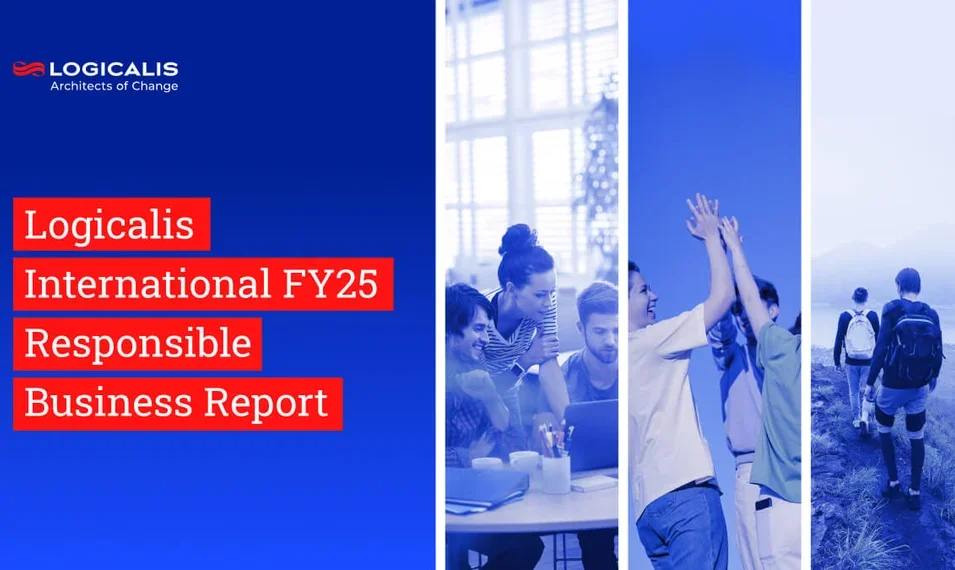
Global , Oct 29, 2025
Press Release
Logicalis achieves major sustainability milestones and expands global community impact
A strong focus on people, planet and communities has driven several notable achievements, including carbon neutrality for Scope 1 and 2 emissions, more women in leadership positions and more under-represented groups reached through community STEM education programmes.
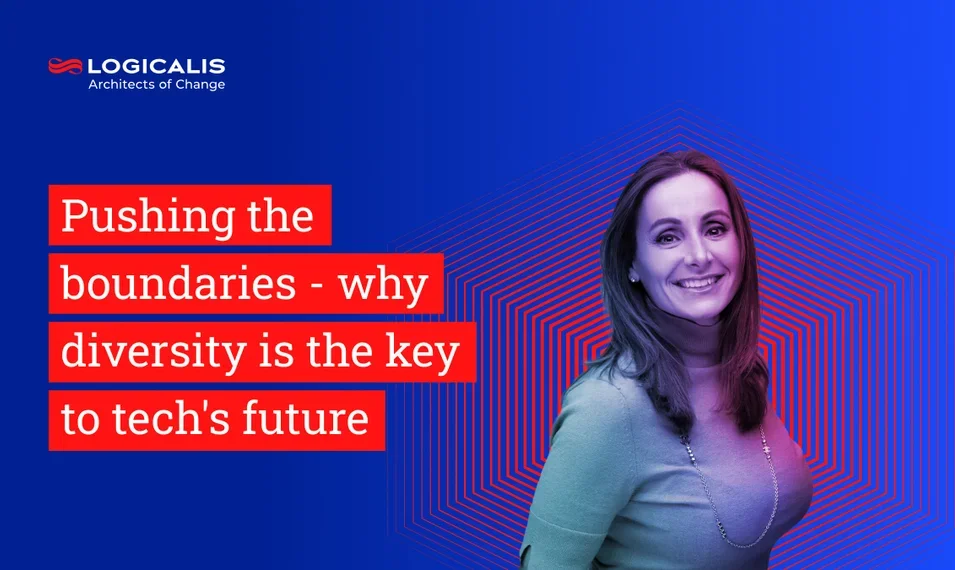
Global , Sep 25, 2025
Pushing the boundaries - why diversity is the key to tech's future
The technology sector shapes the world we live in and the future we imagine. VP of Global Alliances, Anita Swann, shares her perspective on the boundaries that the tech industry still has to break and how it can be done.
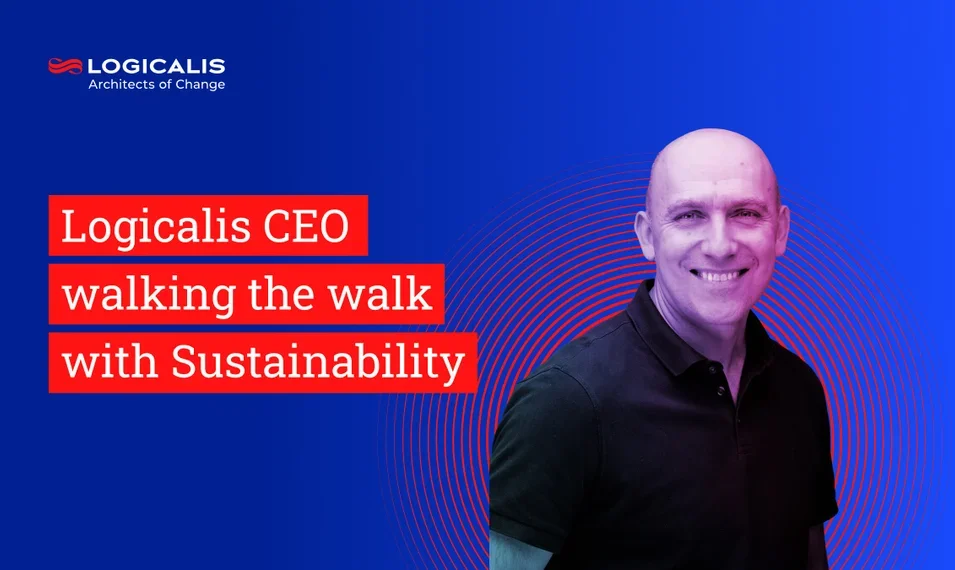
Global , Sep 24, 2025
Logicalis CEO walking the walk with Sustainability
Logicalis CEO Bob Bailkoski is leading by example on sustainability, helping customers cut carbon and energy costs while driving internal carbon neutrality and community impact.

Global , Jul 29, 2025
The Data Dilemma of Sustainability: Why Measuring Impact Isn’t Just a Numbers Game
Explore how Logicalis tackles sustainability data challenges using IBM Envizi, blending ESG metrics with qualitative insights for meaningful impact.
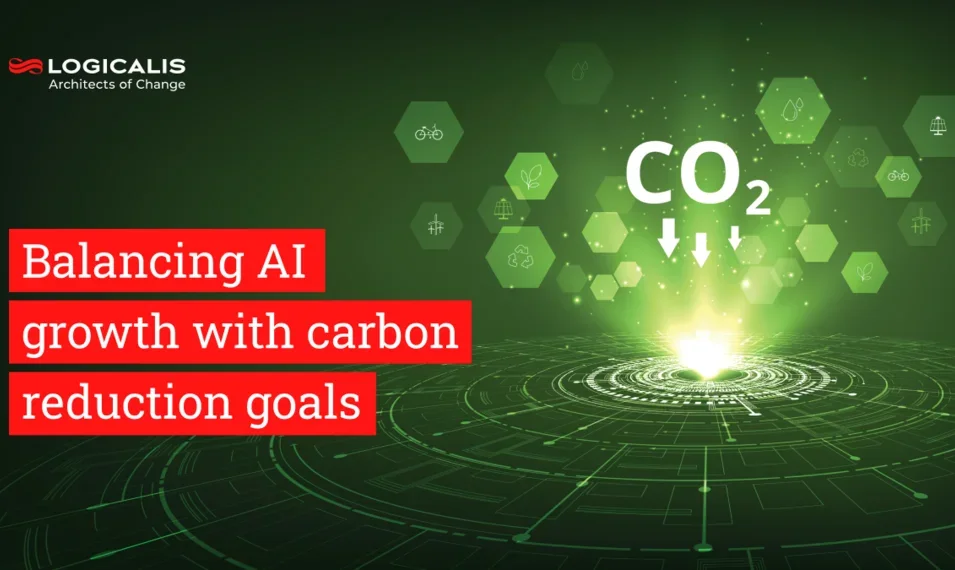
Global , Jul 7, 2025
Balancing AI growth with carbon reduction goals
Artificial intelligence has moved from the fringes of operational considerations to the forefront of operations. As organisations race to implement AI innovations, we all face a critical question, how do we reconcile the energy-intensive nature of AI with existing sustainability commitments?
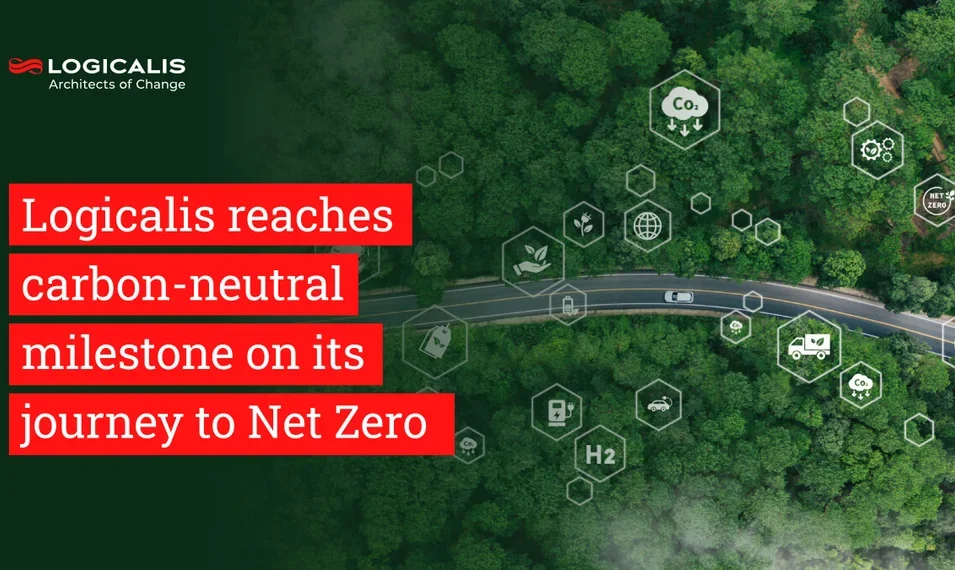
Global , Jun 26, 2025
Press Release
Logicalis reaches carbon-neutral milestone on its journey to Net Zero
Logicalis announces it has achieved its 2025 target for carbon neutrality in Scope 1 and 2 emissions - marking a significant milestone in the company’s journey to reach its SBTi-validated goals.

Global , Jun 25, 2025
Blog, Videos
Logicalis reaches carbon neutrality: Scope 1 & 2 emissions milestone achieved
Watch as Bob Bailkoski discusses how Logicalis has achieved carbon neutrality for its Scope One and Scope Two emissions, reaching its 2025 target.
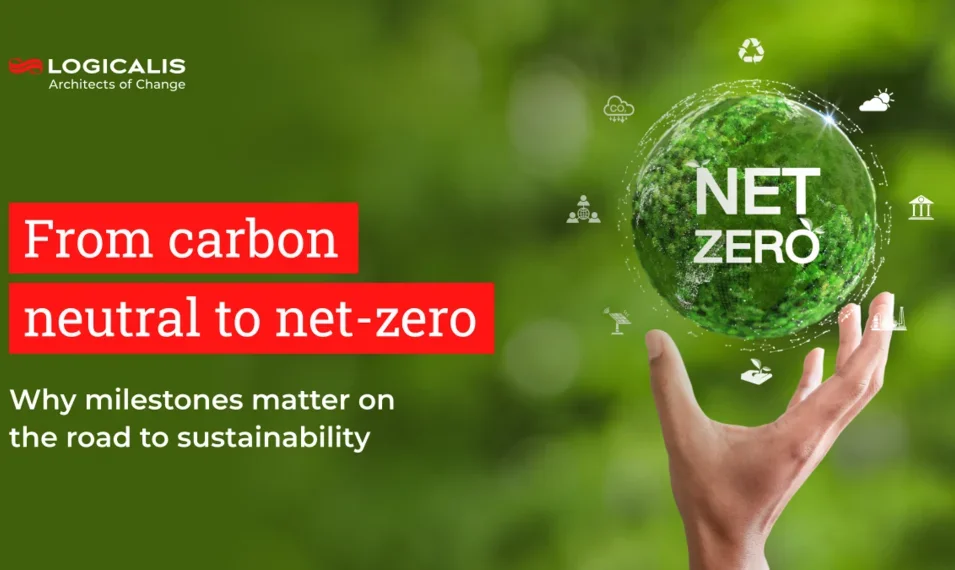
Global , Jun 19, 2025
From carbon neutral to net-zero: Why milestones matter on the road to sustainability
At Logicalis sustainability isn’t a secondary activity. It’s embedded in our DNA. As we mark our achievement of carbon neutrality for Scope 1 and 2 emissions, it’s a moment to reflect on not only how far we’ve come, but also on the road ahead.
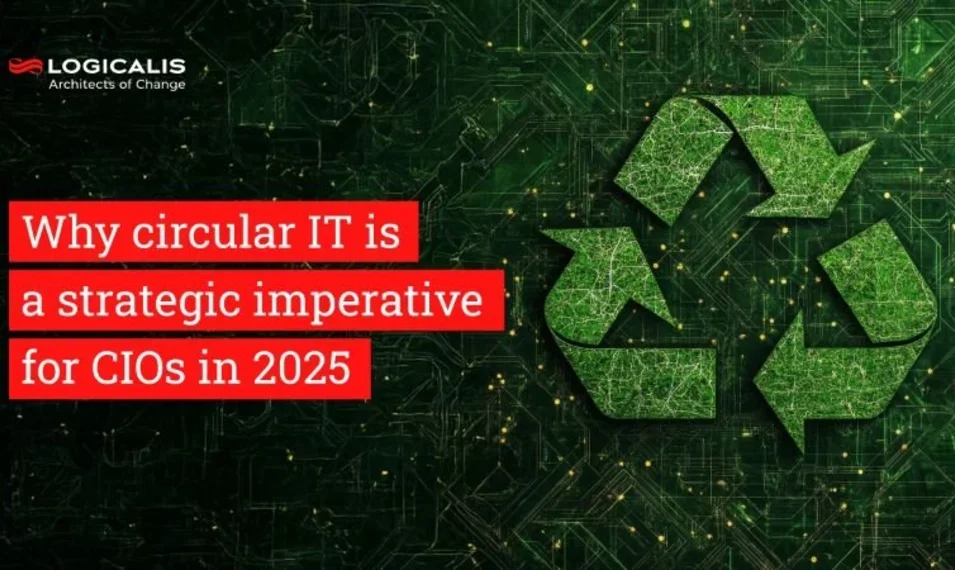
Global , May 29, 2025
Why circular IT is a strategic imperative for CIOs in 2025
The convergence of sustainability and profitability is reshaping how CIOs approach technology strategy. Circular IT is no longer just a green initiative – it’s a strategic imperative. By extending the lifecycle of IT assets, reducing e-waste, and leveraging vendor takeback programs, CIOs can transform their departments into sustainability powerhouses while unlocking new economic value.
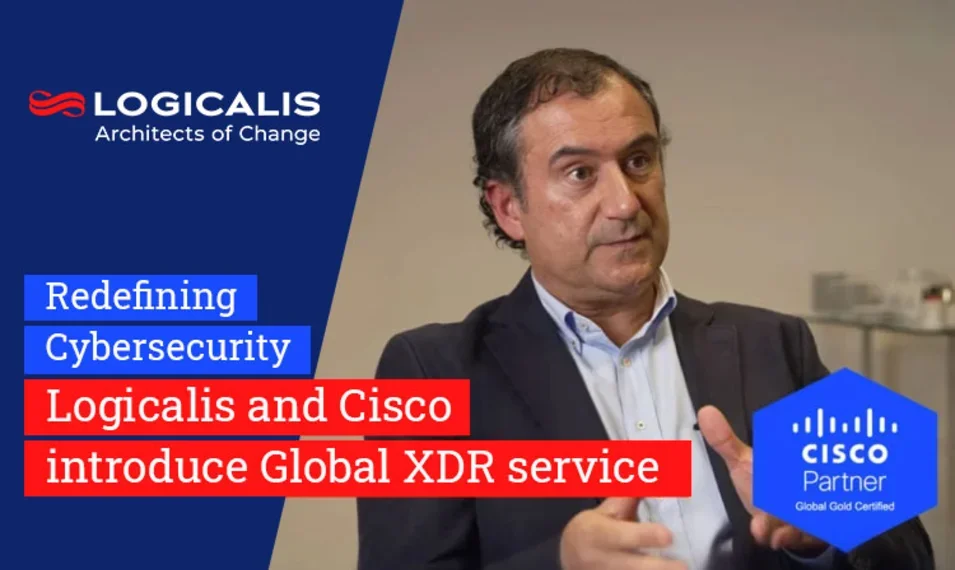
Global , May 27, 2025
Logicalis becomes the first global Cisco partner to launch XDR as a Service
Read this great article by Pedro Morgado as he discusses how the strategic partnership with Cisco helps Logicalis strengthen its cybersecurity leadership with the global launch of Cisco XDR.
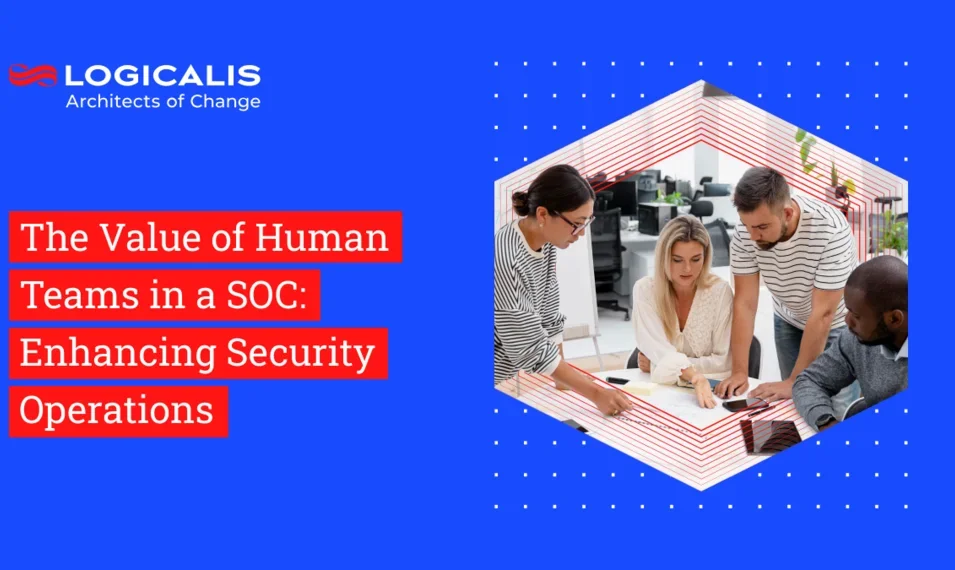
Global , May 27, 2025
The Value of Human Teams in a SOC: Enhancing Security Operations
Why technology alone isn't enough to safeguard your organisation - the importance of the human element in a security operations centre (SOC) and why it can't be underestimated. Article by Artur Martins, CSIO Logicalis Portugal.
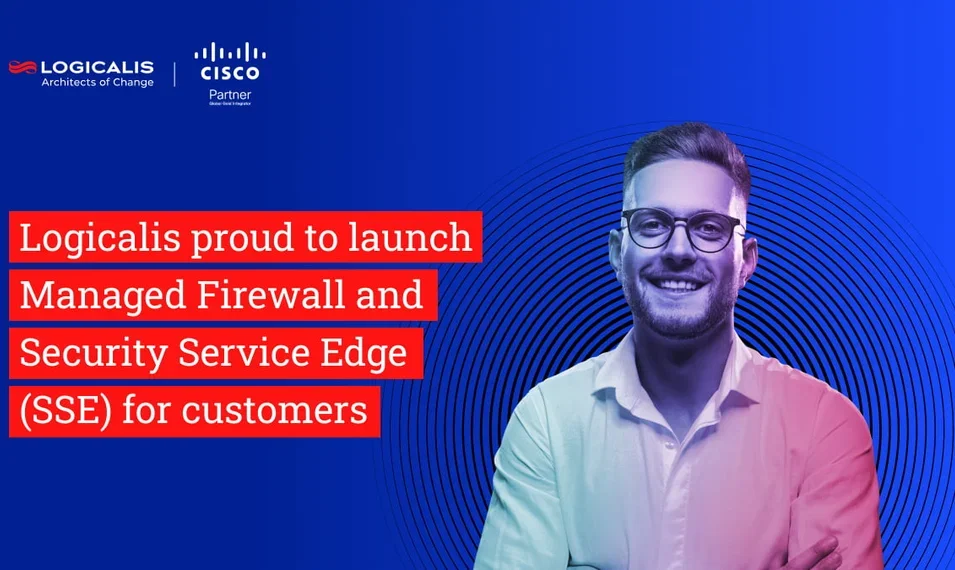
Global , May 22, 2025
Press Release
Logicalis launches Managed Secure Firewall and SSE solutions to enhance customer connectivity
Logicalis adds Managed Secure Firewall and SSE to its Intelligent Connectivity portfolio, helping customers secure and scale their networks in today’s digital world.
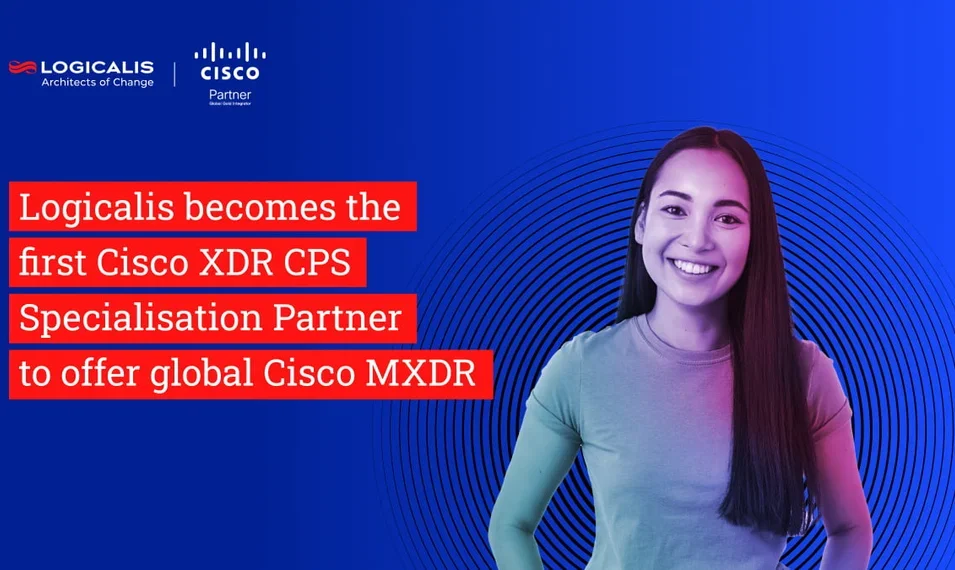
Global , May 22, 2025
Press Release
Logicalis becomes first Cisco XDR CPS Specialisation Partner to offer global Cisco MXDR
Logicalis is the first Cisco XDR CPS Specialisation Partner to deliver Cisco MXDR as a global managed service, enhancing 24/7 threat detection and response.

Global , Apr 24, 2025
Driving Sustainability Forward: The Power of Innovative Partnerships
Sustainability is a journey requiring continuous innovation and collaboration. In this article, Cisco discusses how its partners, including Logicalis, drive meaningful change with unique solutions to support business needs and sustainability goals.
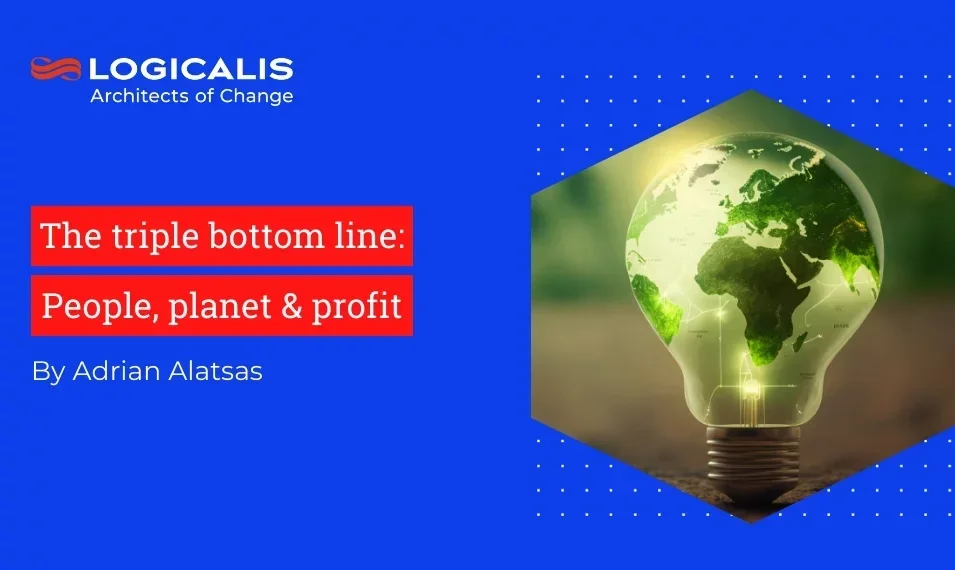
Global , Apr 23, 2025
The triple bottom line: People, planet and profit
Leading the charge in sustainability not only benefits the planet but also affects people and profits, aligning with the concept of the triple bottom line. This mindset is not exclusive to IT; anyone, from plumbers to software developers, can adopt a more sustainable mindset to minimise environmental impact.

Global , Mar 17, 2025
Press Release
Logicalis 2025 CIO Report: CIOs under pressure to deliver a return on innovation
Logicalis has released its annual CIO Report, which reveals that 95% of organisations are actively investing in technology to create new revenue streams within the next 12 months. Read more key findings from this year's annual survey.
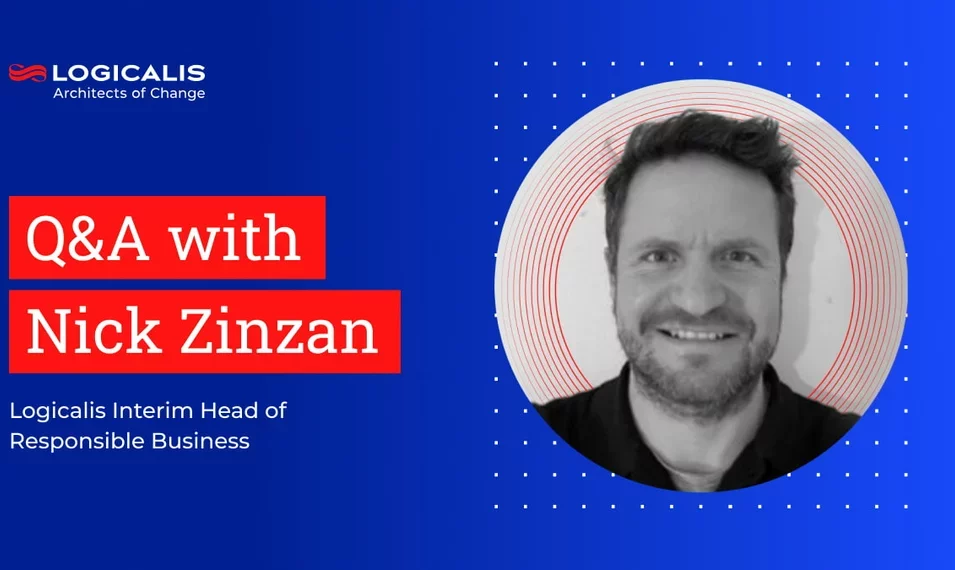
Global , Feb 7, 2025
Introducing Logicalis’ Interim Responsible Business Leader
Logicalis has a new Interim Responsible Business leader, Nick Zinzan. Read this Q&A session to understand more about his background and his key focus for Logicalis' key sustainability goals for 2025.
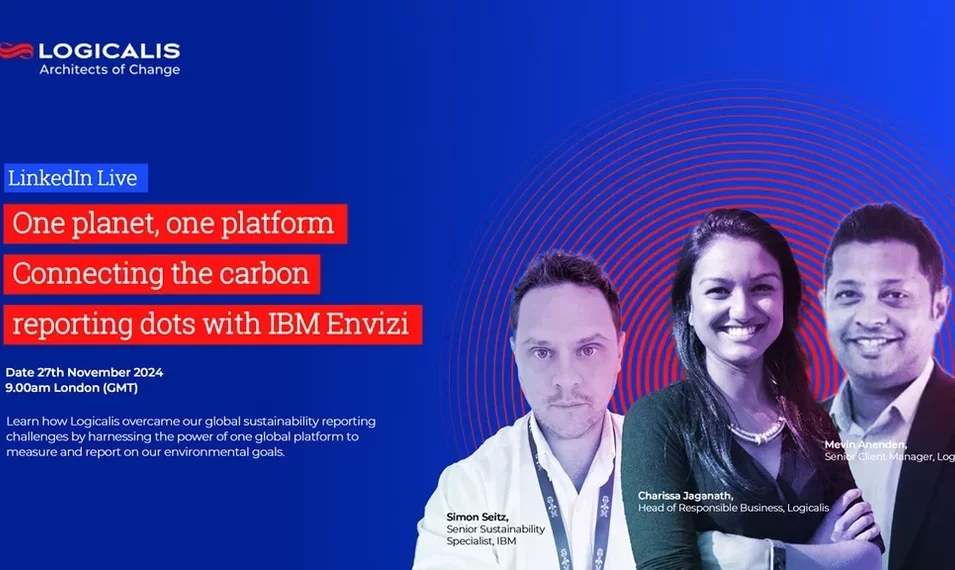
Global , Nov 28, 2024
Connecting the carbon reporting dots with IBM Envizi
Watch this webinar OnDemand and understand how Logicalis overcame our global sustainability reporting challenges by harnessing the power of one global platform to measure and report on our environmental goals.

Global , Nov 20, 2024
One Planet, One Platform
How Logicalis connected their global carbon reporting dots with IBM Envizi.

Global , Nov 11, 2024
In the news
Logicalis becomes the first global partner to launch Cisco XDR
Watch as Cisco's VP of Product Management for Threat Detection and Response, AJ Shipley, and Logicalis' CTO, Toby Alcock, discuss the significance of Logicalis being the inaugural partner to introduce Cisco (XDR) as a Managed Service (MXDR)

Global , Nov 8, 2024
Press Release
Logicalis becomes the first global partner to launch Cisco XDR as a managed service
Logicalis has become the first global Cisco partner to launch Cisco Extended Detection and Response (XDR) as a Managed Service (MXDR).
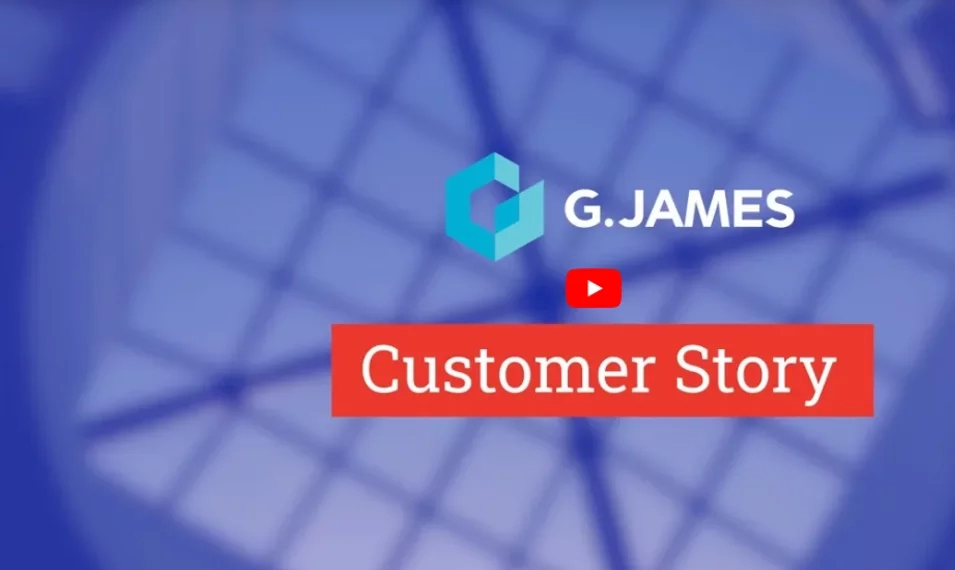
Global , Oct 25, 2024
Case Studies, Videos
Logicalis partners with G.James to achieve sustainable business outcomes
G.James needed to modernise its ageing switching infrastructure whilst partnering with an organisation that aligns with their ESG goals and objectives.

Global , Oct 24, 2024
Press Release
Logicalis recognised as Global Sustainability Partner of the Year 2024
Logicalis receives the global accolade, in recognition of its leadership and performance in sustainable practices for the second year running
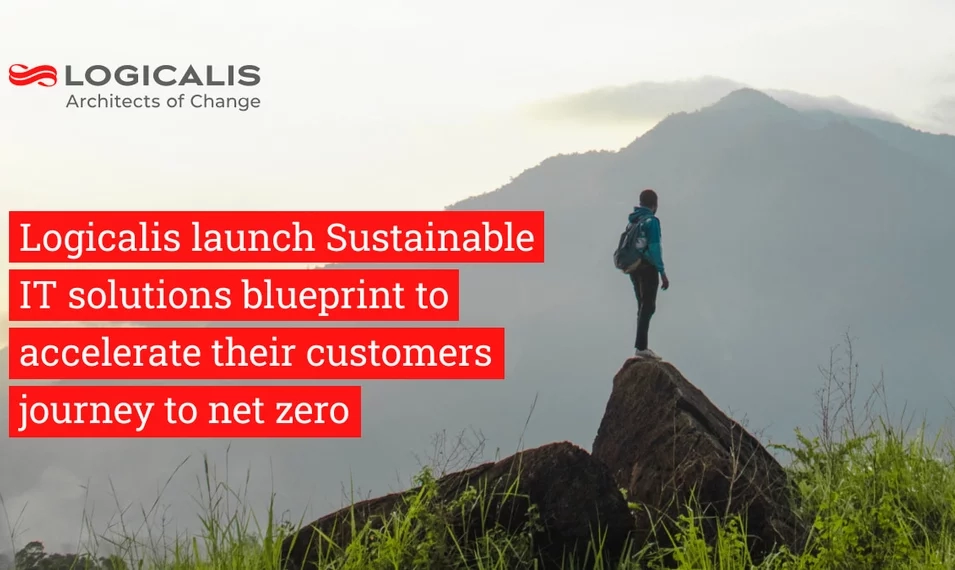
Global , Oct 14, 2024
Press Release
Logicalis launch Sustainable IT solutions blueprint to accelerate their customers journey to net zero
Logicalis announced the launch of its comprehensive Sustainable IT solutions blueprint, designed to propel organisations towards a more environmentally conscious and carbon efficient IT infrastructure.
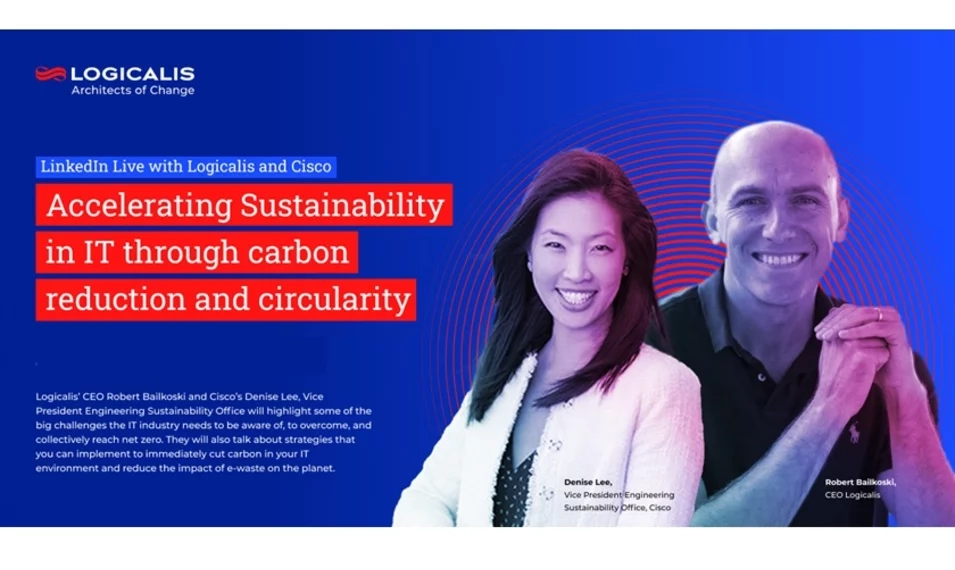
Global , Oct 11, 2024
Accelerating sustainability in IT through carbon reduction and circularity
What organisations can do today to drive carbon reduction through their IT environment and promote the right procurement and circularity practices to reduce the impact of IT.
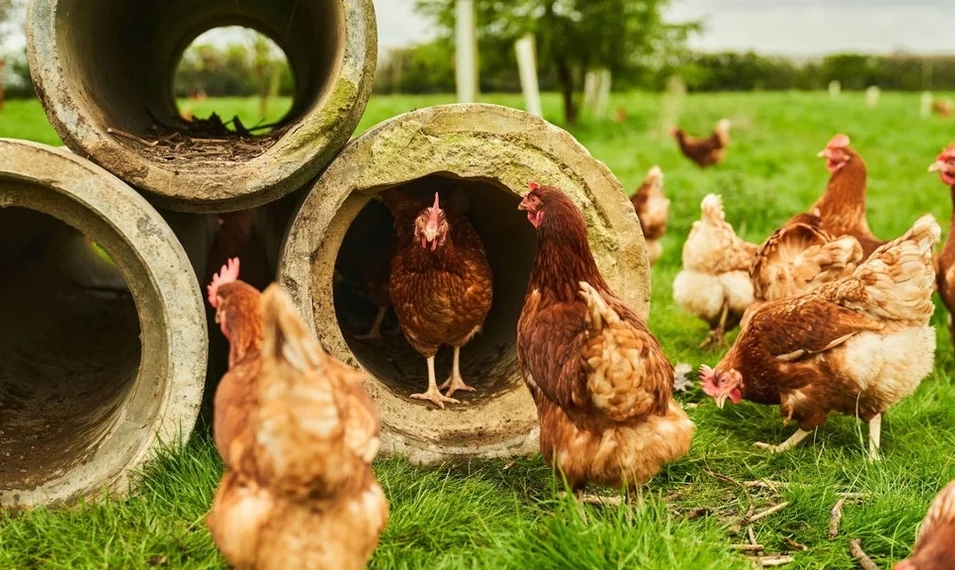
Global , Oct 4, 2024
Noble Foods optimise operations and get closer to net zero with network transformation
Noble Foods sought to transform their network infrastructure to support critical business operations and meet sustainability goals.
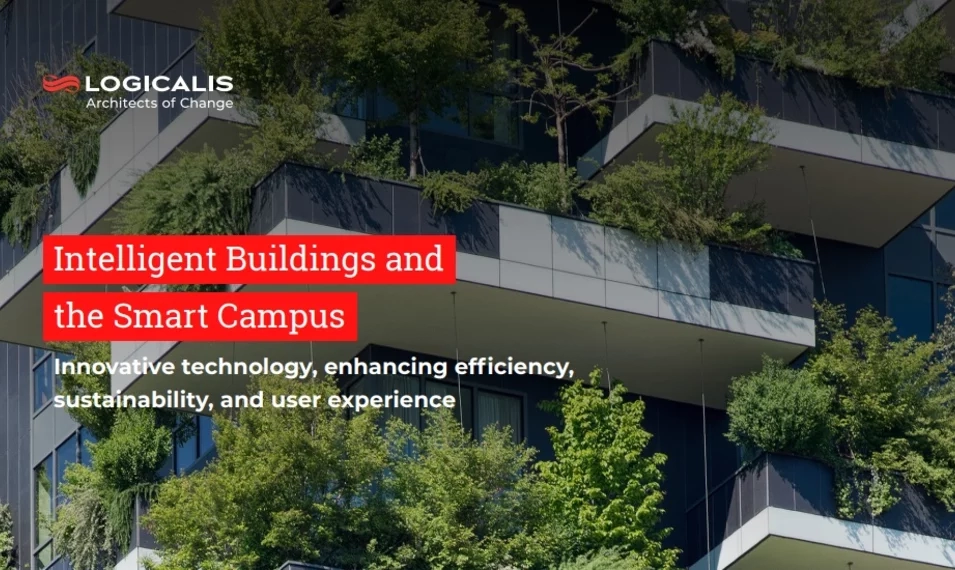
Global , Sep 26, 2024
Intelligent Buildings and the Smart Campus
To create an Intelligent Building as part of a future Smart Campus, we need to understand what’s possible, explore current solutions, and bring together network and data services.

Global , Sep 25, 2024
Press Release
Logicalis win prestigious TSIA Star award
Logicalis announced as winners of the TSIA Star Award 2024 for Innovative KPIs in Managed Services. This accolade underscores our commitment to delivering cutting-edge Managed Services that empower CIOs along the value chain in their digital transformation journey.
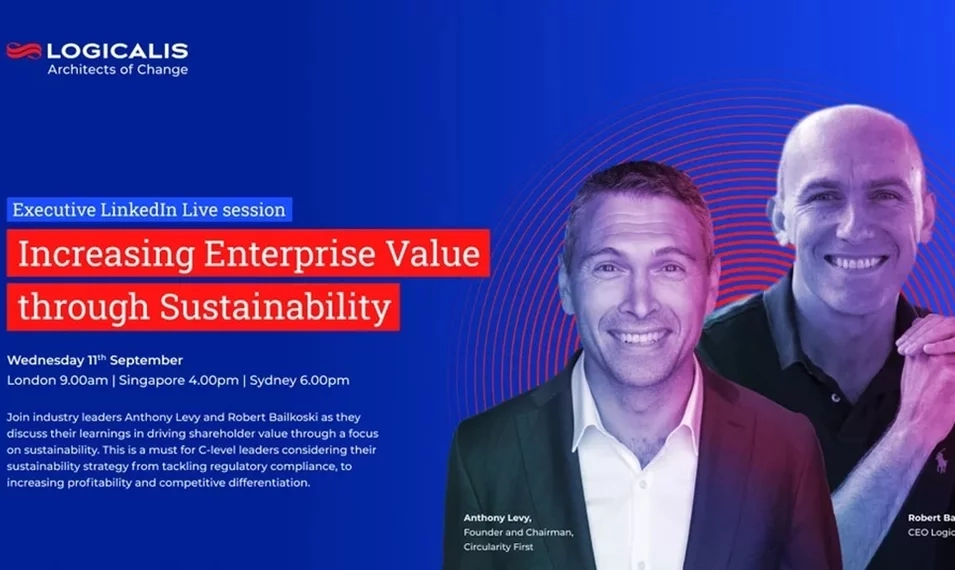
Global , Sep 19, 2024
Increasing enterprise value through sustainability
Watch this webinar as Logicalis’ Chief Executive Officer Robert Bailkoski and Circularity First, Founder and Chairman, Anthony Levy, discuss their learnings on building successful organisational and shareholder value through a focus on sustainability.
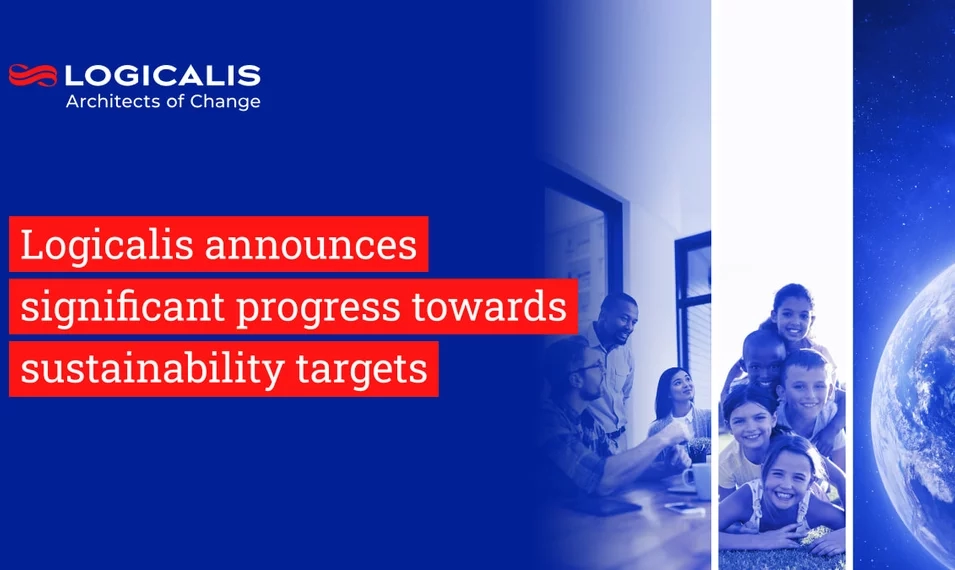
Global , Sep 11, 2024
Press Release
Logicalis announces significant progress towards sustainability targets
Logicalis is proud to share our inaugural Responsible Business report for FY24 which sets out our ambitions, progress and future plans related to our responsibility agenda for our people, our communities and our planet.

Global , Aug 28, 2024
Blog
Circular logic: Why IT leaders need to embrace circularity for sustainable IT
Discover how embracing Circular IT can transform your IT department into a sustainability powerhouse. This article explores the top 5 ways IT leaders can deliver on sustainability goals.
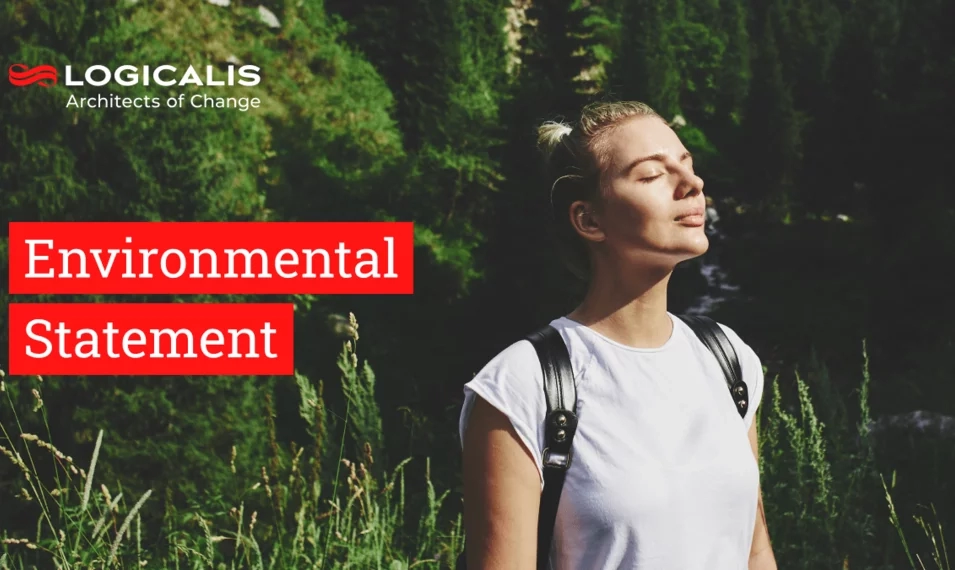
Global , Aug 19, 2024
Logicalis Environmental Statement
Read about our sustainability pledges, reporting commitments, policies and more in our Environmental Statement.

Global , Aug 8, 2024
Blog
Logicalis scales to new heights with Microsoft in FY24
With awards season behind us and an outstanding year of growth, customer outcomes and new capabilities, Logicalis, has received significant recognition for our outstanding partnership with Microsoft in FY24.

Global , Jul 31, 2024
Blog
How can C-level leaders unlock enterprise value through Sustainability?
Read how CEOs and other top executives can champion sustainable practices, to inspire the entire company to prioritise responsibility and innovation. Join our LinkedIn live - Increasing Enterprise Value through Sustainability - on Wednesday 11th September 2024.

Global , Jul 22, 2024
In the news
AI: Security risk versus business reward in a hybrid working world
Protect your organisation from cyber threats with AI powered security solutions. Enable flexible working while ensuring data privacy and protection. Read Bob Bailkoski's article originally published in Forbes.

Global , Jul 1, 2024
Press Release
Logicalis 2024 CIO Report: Sustainability a top focus for tech investment
Discover how tech leaders are prioritising sustainability and investing in initiatives and technologies to achieve environmental objectives. Find out why IT plays a crucial role in achieving sustainability goals.

Global , May 7, 2024
Press Release
Logicalis enhances global security services with the launch of Intelligent Security
Logicalis announces the launch of Intelligent Security, a blueprint approach to its global security portfolio designed to deliver proactive advanced security for customers worldwide

Global , May 7, 2024
Press Release
Logicalis unites Australia and Asia operations as Logicalis Asia Pacific
Logicalis announces the creation of a new Asia Pacific entity, combining its Logicalis Australia and Logicalis Asia operations.

Global , Apr 17, 2024
Press Release
Logicalis net-zero emissions targets approved by Science Based Targets initiative (SBTi)
Logicalis joins the global movement towards corporate net-zero with validated and approved science-based targets, aligning with the Paris Agreement goals.

Global , Mar 25, 2024
Press Release
Logicalis elevates global security portfolio with Microsoft verified Managed XDR Partner Status
Logicalis joins an elite group of managed service providers certified to deliver Microsoft’s most advanced managed detection and response services worldwide

Global , Mar 18, 2024
Press Release
Logicalis the first Cisco Global Partner to achieve Sustainable Campus Access Add-On Specialisation
Logicalis receives inaugural specialisation that acknowledges its position at the forefront of sustainable global managed service delivery. The specialisation was awarded to Logicalis for supporting its customers to reduce the carbon footprints of their digital ecosystems

Global , Mar 4, 2024
Press Release
Logicalis 2024 CIO Report: AI and security are top priorities amidst barriers to transformation
Discover the top priorities of tech leaders according to the Logicalis 2024 CIO Report. Learn about AI, digital transformation, and cybersecurity investments amidst economic uncertainty.
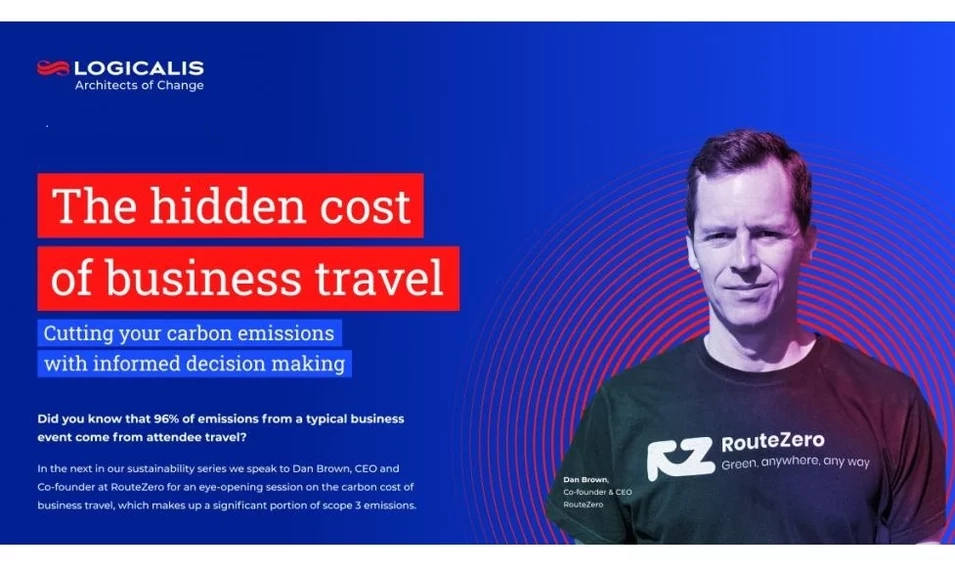
Global , Feb 28, 2024
The hidden cost of business travel
Tackling scope 3 emissions can be a daunting prospect for any organisation but with informed decision making it’s possible to not only improve emissions but create quick improvements on the way to reaching sustainability goals

Global , Feb 14, 2024
Dina Knight joins QinetiQ board as Non-Executive Director
Dina Knight will join the QinetiQ Board as Non-Executive Director on 1 March 2024. Dina’s NED position will compliment her role as Chief People Officer at Datatec and Logicalis International, accountable for its people operations and strategy.

Global , Feb 12, 2024
Evolving Cloud trends
Cloud technology continues to be at the forefront of innovation and a critical element to any digital strategy in 2024. As businesses increasingly embrace digital transformation, understanding and leveraging, evolving cloud trends and technologies is crucial to staying competitive in the market.
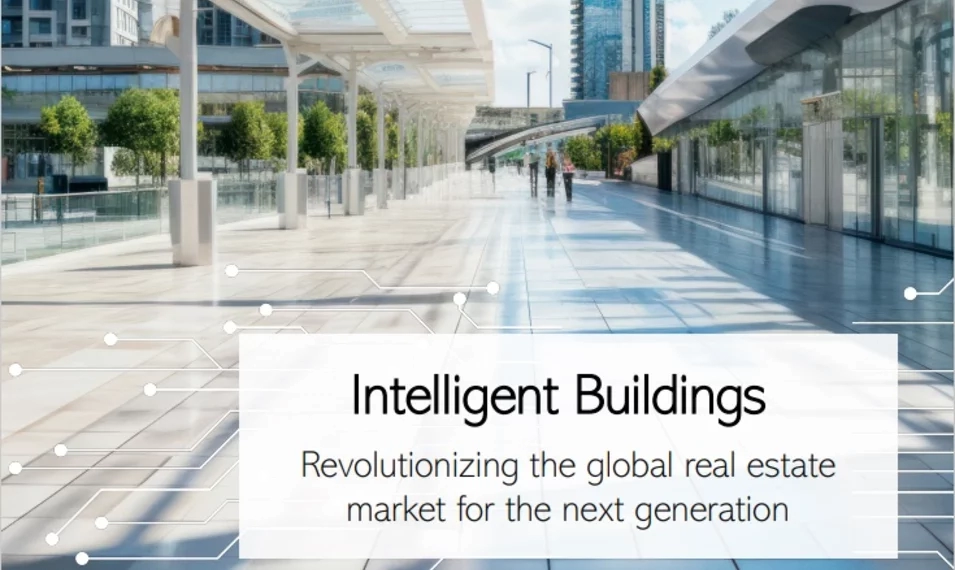
Global , Feb 5, 2024
Intelligent Buildings: Revolutionising the global real estate market for the next generation
Planning and designing an intelligent building is a complex process. Working with a team of experienced professionals will help to ensure the best results for everyone – owners, operators, and occupants.
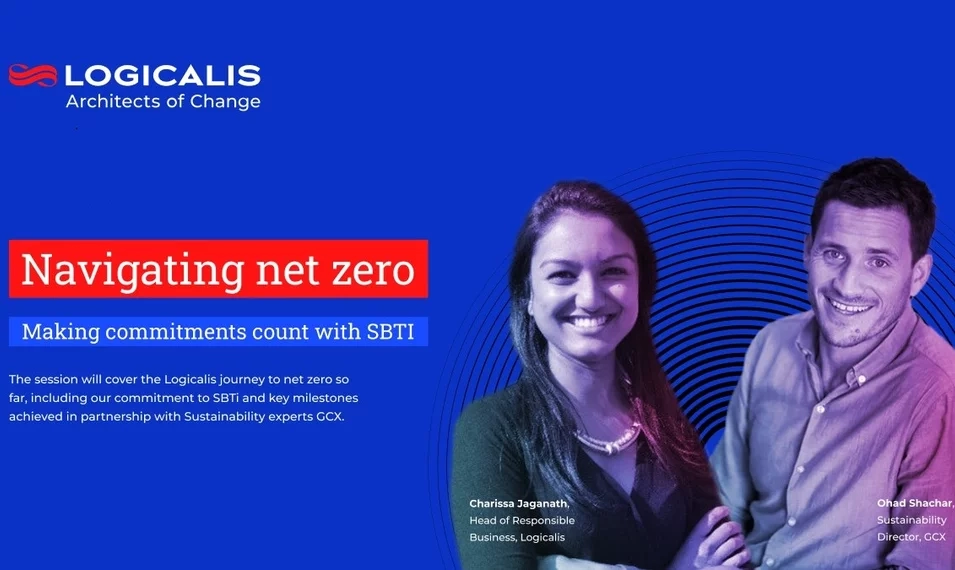
Global , Jan 30, 2024
Navigating net zero - Making commitments count with SBTi
During this webinar, you will learn about Logicalis' sustainability journey, our commitment to SBTi and its impact, key milestones achieved in partnership with GCX, and the practical steps taken to achieve net zero.

Global , Jan 9, 2024
Press Release
Logicalis’ latest release of AI-powered digital fabric platform delivers enhanced visibility for CIOs
Logicalis announces the release of the next generation of its Digital Fabric Platform, providing CIOs with deeper-level insights and recommendations to underpin the performance of their entire digital ecosystem.
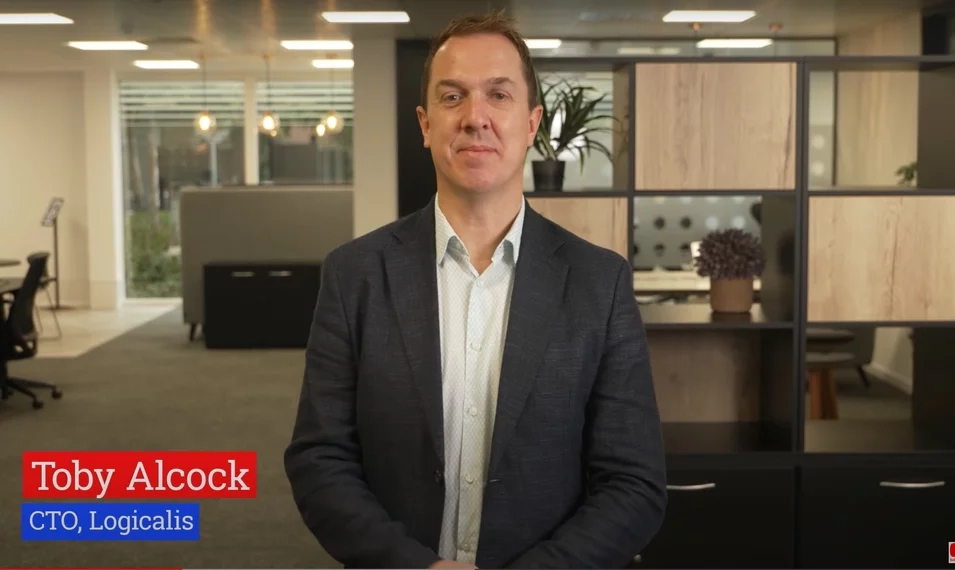
Global , Jan 4, 2024
Toby Alcock discusses sustainable managed services
What steps can managed IT service providers (MSPs) take to provide their customers with sustainability and carbon monitoring services?
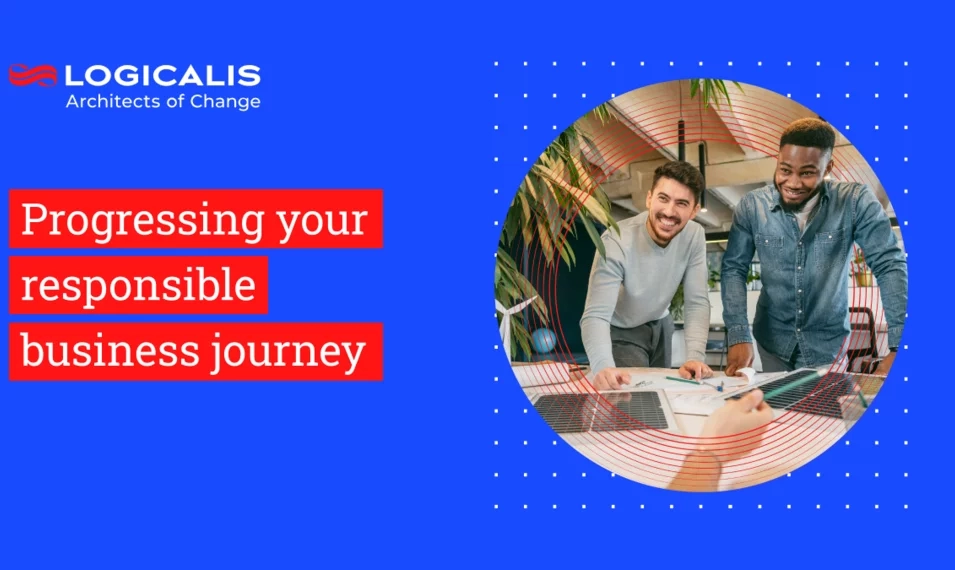
Global , Dec 11, 2023
Progressing your responsible business journey
Our responsible business agenda has been shaped by understanding who we are as a business, which social and environmental challenges are important to our customers, partners, people and in the regions that we operate in.
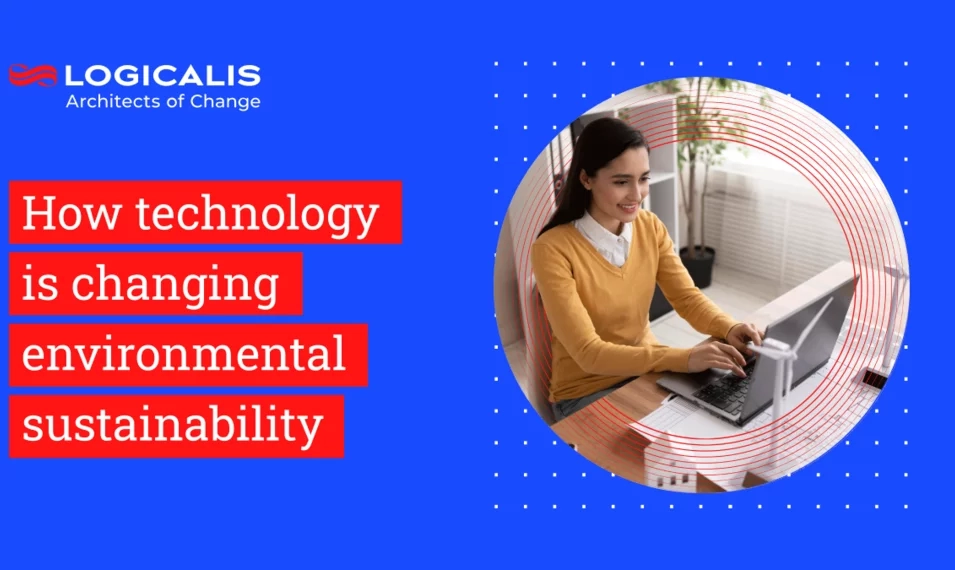
Global , Nov 23, 2023
How technology is changing environmental sustainability
The enablement of sustainability strategies through technology and IT, in this instance is what can truly enable business growth and ESG performance, and there are several ways that they tie together.
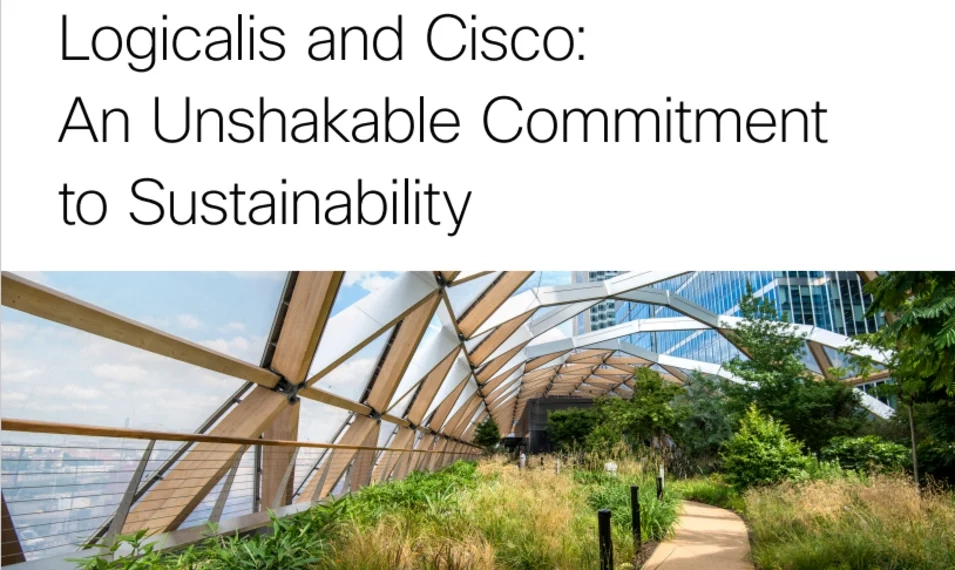
Global , Nov 15, 2023
Logicalis and Cisco: An Unshakable Commitment to Sustainability
Together Cisco and Logicalis have delivered value to our mutual customers through a focus on innovation and service, and are now helping organisations across the globe to meet their sustainability objectives.
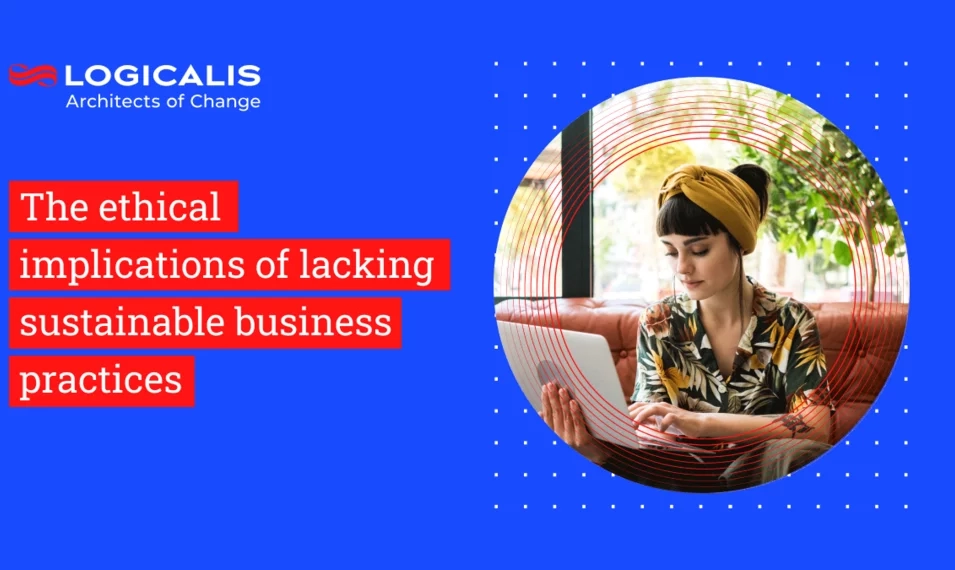
Global , Nov 15, 2023
The ethical implications of lacking sustainable business practices
A sustainable society is one that lives within the carrying capacity of its natural and social systems, but as the impact of businesses on the environment has increased dramatically, that balance for a sustainable society has tipped.

Global , Nov 3, 2023
Press Release
Logicalis awarded Global Sustainability Partner of the Year at Cisco Partner Summit 2023
This inaugural award recognises Logicalis’ outstanding sustainability performance and success in helping customers reduce the environmental impact of their IT infrastructure across the globe.

Global , Oct 26, 2023
Logicalis named inaugural 2023 Cisco Global Sustainability Partner of the Year
Here are some key Logicalis and Cisco areas we're co-collaborating on to deliver value and open new opportunities to drive sustainable practices for our customers, environment, and planet.

Global , Oct 26, 2023
The evolution of ESG: from corporate 'nice-to-have' to corporate necessity
Corporate sustainability has become more than a “nice to have”. We are seeing more and more organisations realise the urgency to act not just because of regulatory pressure, but also because they see sustainability as a way to drive business benefits. Environmental and social governance or ESG which considers sustainability policies and ethical practice, is moving out of the shadows and becoming the next big bet in business transformation providing clear shared value.
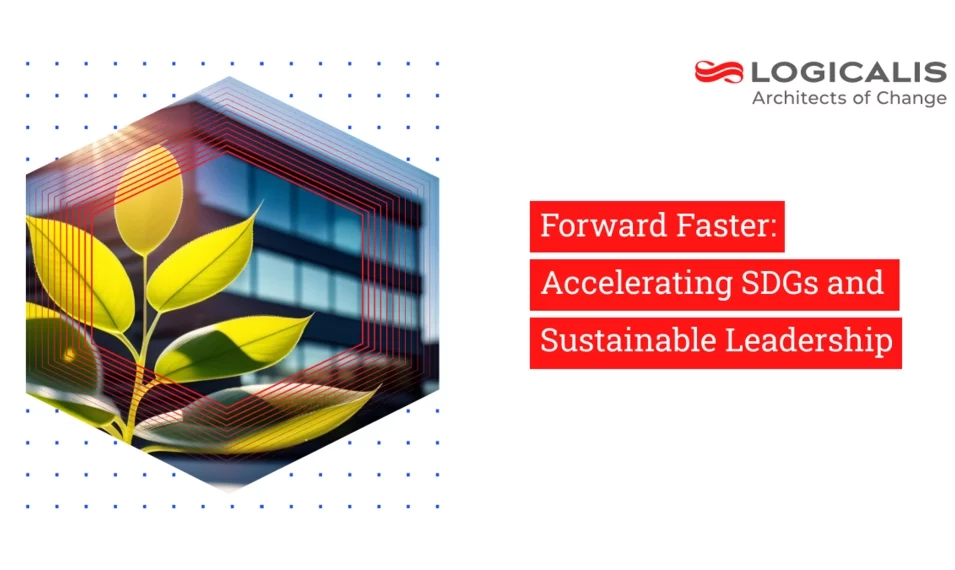
Global , Oct 16, 2023
Forward Faster: Accelerating SDGs and Sustainable Leadership
While we are working hard on our robust responsible business plan, especially with regards to our sustainability goals, there is still a long way for us all to go. Responsible Business Manager Sharon Kekana, recently participated in the UN Global Compact Leaders Summit, held at the Javits Centre in New York.

Global , Oct 5, 2023
In the news
Why the CIO is key to driving business sustainability
Sustainability initiatives in the business world, are becoming more of a requirement and technology plays a central role. Read Bob's three steps for CIOs to become leaders in driving their sustainability agendas.
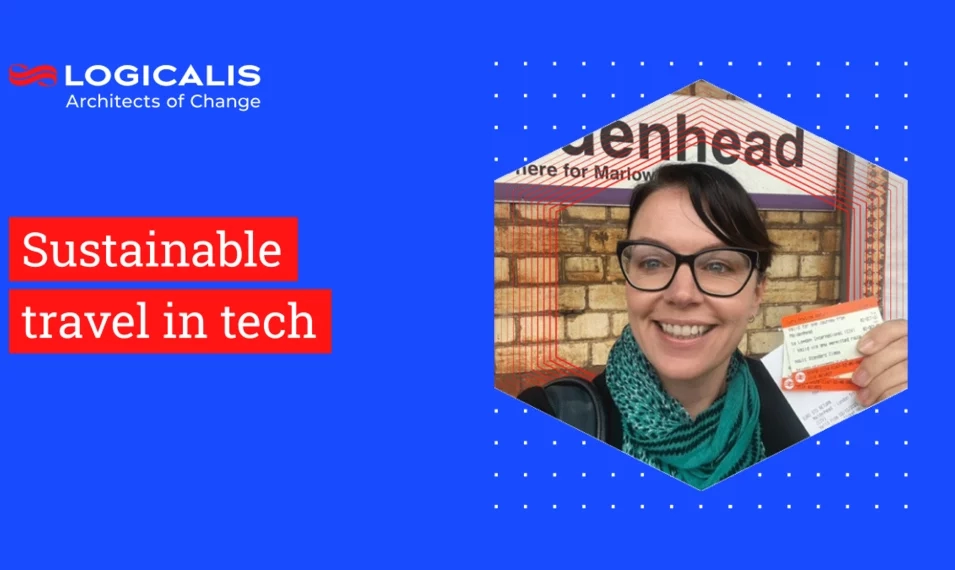
Global , Oct 4, 2023
Sustainable travel – a realistic goal in the IT industry?
Catriona Walkerden, Global VP, Marketing takes us through how the new sustainable travel policy at Logicalis influenced her recent business travel decisions. See how she got on ...

Global , Sep 21, 2023
In the news
What should organisations look for in an SD-WAN as-a-Service provider?
Pedro Morgado outlines the key factors organisations need to consider when selecting an SD-WAN solution provider.

Global , Sep 20, 2023
Logicalis strengthens Global Cisco team with the promotion of Wayne Haylett to Global Cisco Alliance Director
Logicalis announces the promotion of Wayne Haylett from Logicalis Australia to the position of Global Cisco Alliance Director, reporting to Global VP Strategic Alliances, Richard Simmons.
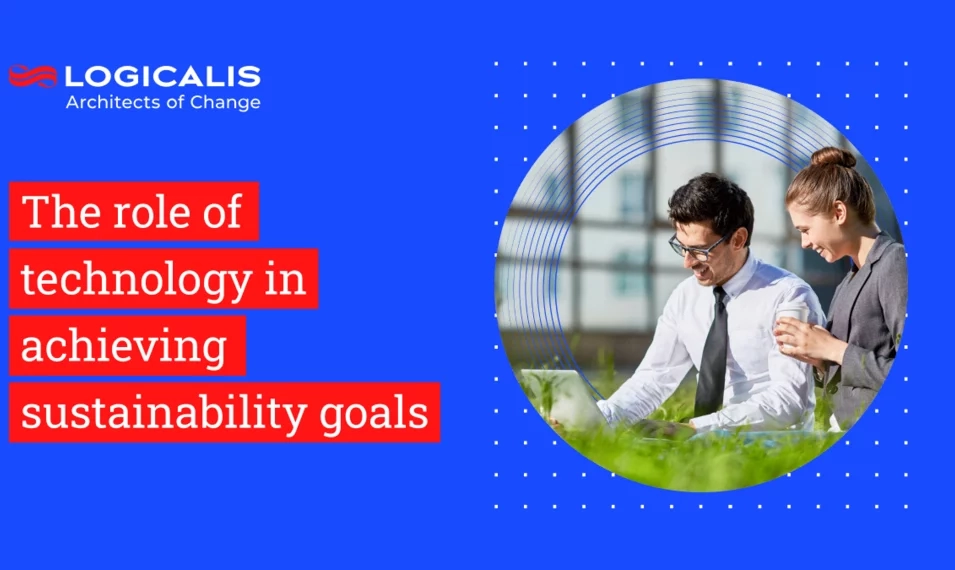
Global , Sep 18, 2023
The role of technology in achieving sustainability goals
Technology has undoubtedly revolutionised the world, however, technology and sustainable approaches are not mutually exclusive. There is a duality to technology and sustainability; while technology itself must be made more sustainable, the way we use technology may be the key to acting more sustainably and tackling the climate crisis.

Global , Sep 4, 2023
Press Release
Logicalis expand their suite of Cisco-powered managed services with the launch of Intelligent Connectivity
Logicalis announce the launch of Intelligent Connectivity powered by Cisco, a suite of solutions including Private 5G, SD-WAN, SASE, SSE, SD-Access and ACI Data Centre and become First Cisco Global Partner to achieve Managed Private 5G strategic designation.
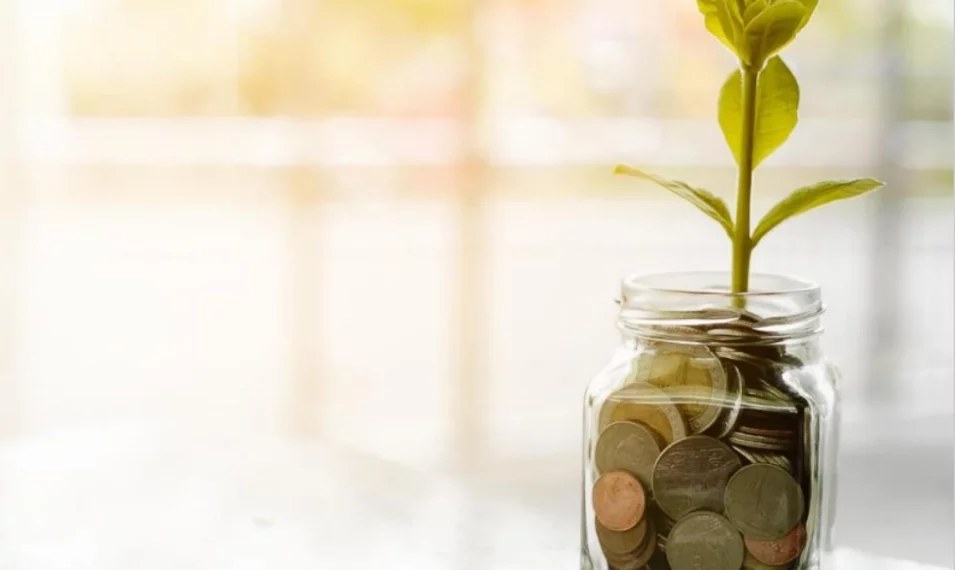
Global , Aug 15, 2023
The evolving role of IT in enabling sustainable transformation
Corporate sustainability has become more than a “nice to have”. More and more organisations realise the urgency to act, not just because of regulatory pressure, but also because they see sustainability as a way to drive business benefits.

Global , Aug 15, 2023
Logicalis publishes Environmental Statement including benchmarks and commitments
As part of our commitment to sustainability and transparency, we have released our Environmental Statement, which discloses our carbon emission baseline figures and lays out a roadmap for achieving our ambitious carbon reduction goals.
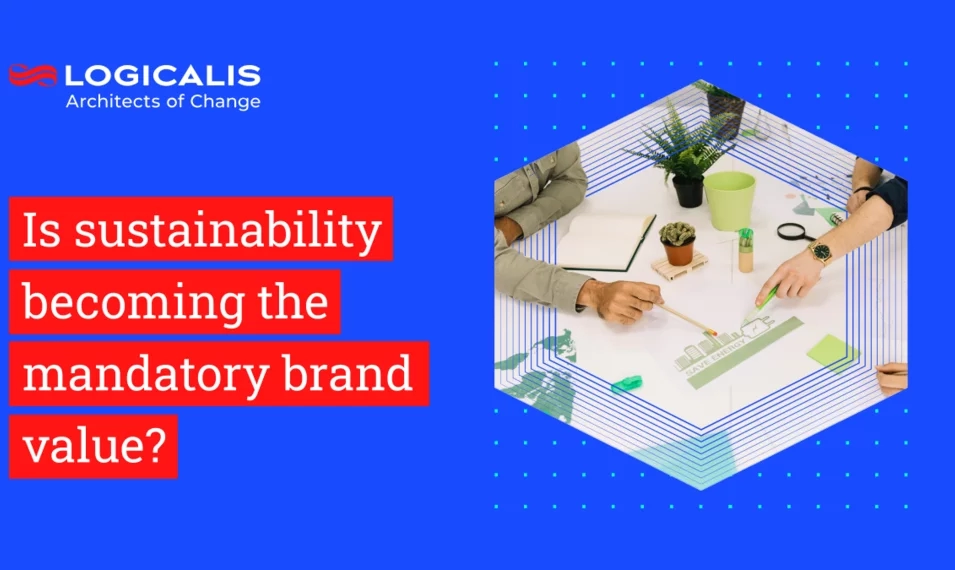
Global , Jul 14, 2023
Is sustainability becoming the mandatory brand value?
Employees and customers are looking to organisations for proactive sustainability action to help tackle the worsening climate situation. How can marketing help drive the right behaviour in organisations?

Global , Jul 10, 2023
Bringing use cases to life: Logicalis creates customer specific use cases with Private 5G Labs
Integration of use cases as well as presentation and training for new 5G solutions

Global , Jul 6, 2023
New platform from Logicalis gives CIOs real-time view of environmental impact
Logicalis announces the launch of the Managed Digital Fabric Platform, created to give CIOs a real-time view of how their entire digital ecosystem is performing across key metrics, including environmental impact.

Global , Jun 30, 2023
The CIO's role in driving sustainability
A panel discussion which asks the guests what technologies they're implementing to optimise their operations towards carbon reduction while maintaining business focus?
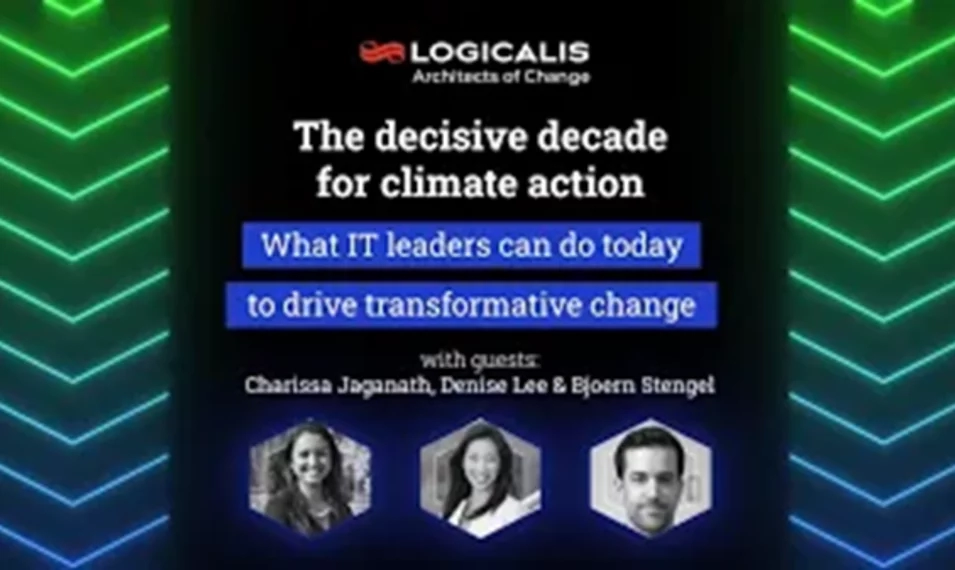
Global , Jun 30, 2023
The decisive decade for climate action
As part of the CIO Summit 2023, Logicalis's Charissa Jaganath hosts this fireside chat with guests Denise Lee, VP Sustainability Engineering Office, Cisco and Bjoern Stengel, Global Sustainability research Lead, IDC.

Global , Jun 30, 2023
CIOs come together to address sustainability at the annual Logicalis CIO Summit
CIO commitment needed to measure, manage and reduce carbon emissions Keynote address from Leading Analyst Firm reveals ESG is growing in importance to IT buyers but cautions against investing in tech that doesn’t deliver against goals

Global , Jun 30, 2023
Sustainability now critical to CIOs – and they’re looking to MSPs for help
Sustainability is a key consideration when choosing an IT supplier: nearly half of CIOs consider carbon output energy efficiency when selecting new suppliers.

Global , Jun 30, 2023
In the news
CIOs come together to address sustainability at the annual Logicalis CIO Summit
Keynote address from Leading Analyst Firm reveals ESG is growing in importance to IT buyers but cautions against investing in tech that doesn’t deliver against goals.

Global , Jun 30, 2023
In the news
CIOs increasing spending in ESG performance and metrics
CIOs are increasing investment in technologies that help drive business value and ESG performance and highlighted growing trends such as linking executive pay to ESG metrics, a Logicalis summit was told.

Global , Jun 30, 2023
Deconstructing sustainability: The customer transition to Green IT
Watch Bjoern Stengel - Global Sustainability Research Lead, IDC - deliver his keynote presentation and share his perspective on IT’s critical role in enabling organisations’ sustainable transformation journeys.

Global , Jun 27, 2023
Logicalis renews accreditation as Cisco Global Gold Integrator
As one of only six Cisco Global Gold Certified Partners, Logicalis successfully delivering innovation, engagement, and value for customers worldwide.

Global , Jun 22, 2023
CIO Summit 2023
Our summit, themed Forging a Digital Path to Sustainable IT, gave CIOs insight and inspiration from experts driving sustainable innovation in their industry and highlighted the vital role of IT as an enabler for sustainable transformation.

Global , Jun 16, 2023
Logicalis awarded Next Generation MSP Innovation award at the European MSP Awards 2023.
We created the Managed Digital Fabric platform to enable our customers to run their IT infrastructure and applications more efficiently, securely, and sustainably. We're thrilled that Logicalis has been awarded the Next Generation MSP Innovation Award at the European MSP Innovation Awards 2023 for this platform.

Global , Jun 2, 2023
Do managed service providers hold the answers to a sustainable future in IT?
With sustainability top of mind for everyone, organisations are demanding transparency and clarity from suppliers and partners around ESG goals today.

Global , Mar 6, 2023
Press Release
Logicalis take people strategy to new level with appointment of Dina Knight as its first Group Chief People Officer
Logicalis, a global technology service provider, today announces the appointment of Dina Knight to the position of Chief People Officer, in a newly created role within the executive team, reporting to Global CEO, Robert Bailkoski.

Global , Feb 21, 2023
Budget cuts make innovation a top CIO priority according to the Logicalis global CIO report 2023.
While firms are concerned about the global economy and continue to cut budgets, CIOs are responding by taking on more of a strategic role.

Global , Feb 10, 2023
Bold leadership elevates CIOs to the boardroom, according to Logicalis global study
CIOs have stepped into the role of digital evangelist and strategic advisor, according to the 2023 Global CIO Survey from Logicalis, a global technology service provider.
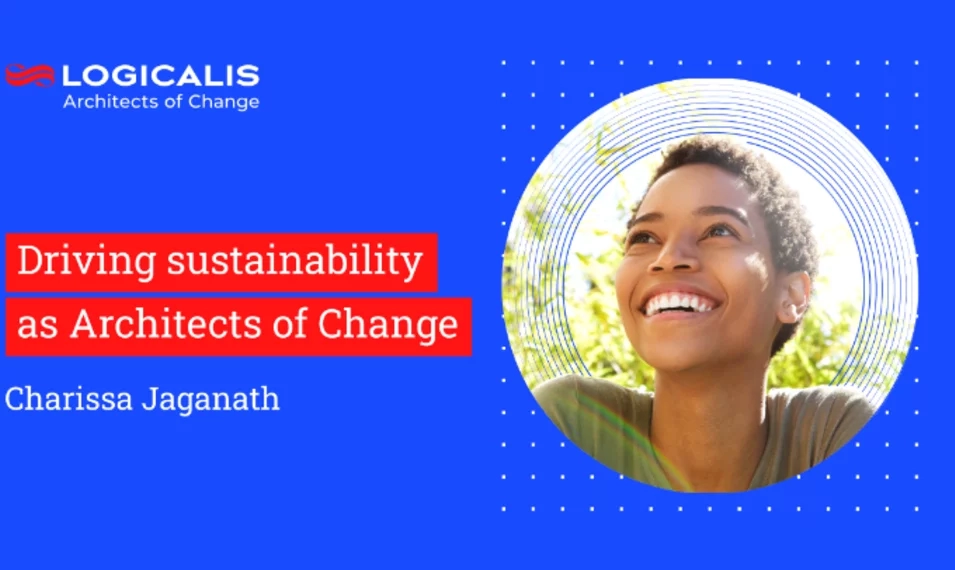
Global , Feb 1, 2023
Driving sustainability as Architects of Change
Being a responsible business is about the ability to make a commitment and make a difference. Charissa Jaganath discusses what Logicalis is doing to make a difference and why driving sustainability is so important to us.

Global , Dec 20, 2022
How can CEOs better incorporate sustainability into their decision-making?
Bob Bailkoski, CEO, shares his top three pieces of advice for CEOs wishing to better incorporate sustainability into their decision making.

Global , Dec 20, 2022
CTO Sessions with IDG Connect: Toby Alcock, CTO Logicalis
Toby speaks to IDG Connect about how he became our CTO, the biggest issues customers are facing currently, how we’re focussed on customer outcomes with automation and how to align technology with business goals.

Global , Dec 19, 2022
Logicalis commits to Corporate Net Zero Standard (SBTi), marking another milestone in its sustainability journey
London, United Kingdom – 19 December 2022: Logicalis, a global technology service provider, today announces its commitment to the Science Based Targets initiative (SBTi) Corporate Net Zero Standard - the world's first framework for corporate net zero target setting in line with climate science.

Global , Dec 12, 2022
Logicalis Group CEO on sustainability: 'There is scope for the channel to work more closely together to achieve greater impact'
Bob Bailkoski, shares with Channel Partner Insight how there is scope for the channel to work more closely together to achieve greater impact

Global , Dec 9, 2022
Logicalis CEO: Sustainability is non-negotiable
Logicalis CEO, Robert Bailkoski talks to Simon Quicke, editor of MicroScope UK, about sustainability and how the business is playing its part in reducing the strain on the planet and how he’s encouraging staff, suppliers and customers to get involved

Global , Nov 14, 2022
We’re an Uber workforce now
Post pandemic, businesses no longer have centralised workforces. What does this mean for operations and management? Our very own Group Senior Vice President of Human Resources, Justin Kearney, shares with UNLEASH how “organisations are turning to technology to create a truly collaborative hybrid workplace and manage the younger generations satisfactorily.”

Global , Nov 7, 2022
Logicalis Recognised as Winner of the Cisco Global Enterprise Networking and Meraki Partner of the Year Award at Cisco Partner Summit 2022
We’re delighted Cisco recognises Logicalis as the Global Enterprise Networking and Meraki Partner of the Year 2022. These awards are a consequence of the 25-year strategic partnership between Logicalis and Cisco, uniting to drive customer success. Congratulations to everyone involved

Global , Oct 27, 2022
Will business air travel ever return to its pre-Covid heights?
While the aviation sector is slowly taking off again, it is struggling to attract passengers who have realised how much work can be done virtually. Bob Bailkoski, CEO Logicalis joins the debate with Raconteur, sharing his views on sustainable travel.
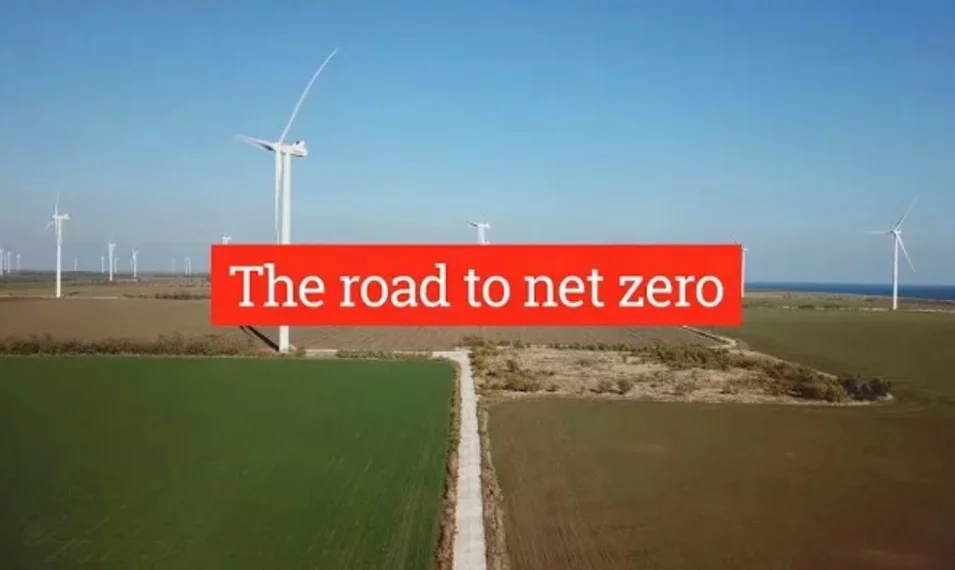
Global , Oct 26, 2022
The road to become a Net Zero carbon organisation
Hear from Logicalis International CEO Bob Bailkoski, and the plan to become a Net Zero carbon organisation.
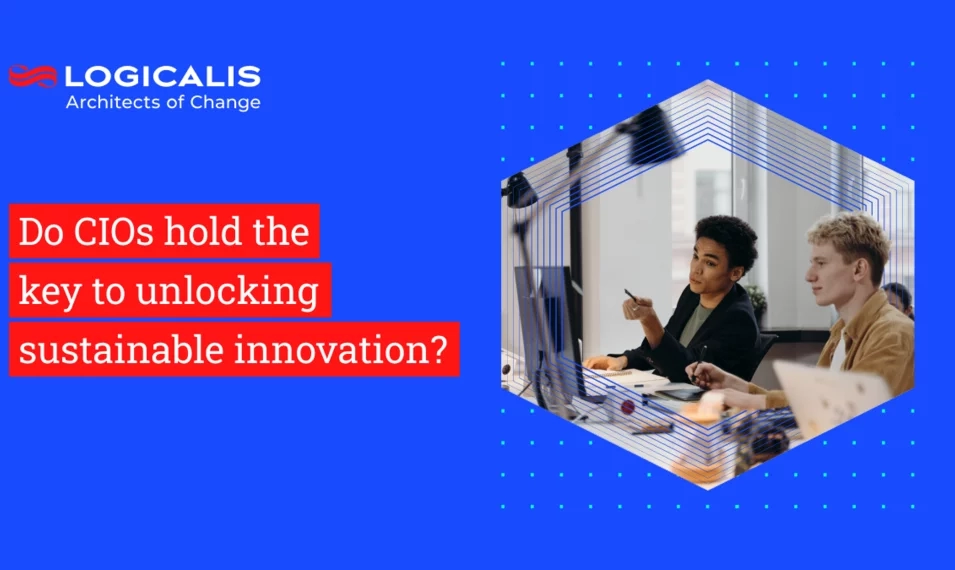
Global , Jun 16, 2022
Do CIOs hold the key to unlocking sustainable innovation?
Businesses need robust plans to lower emissions and reduce their impact on the environment. Businesses not only require sustainable innovation but efficient innovation through taking a data-driven approach and managing IT to outcomes, not uptime.
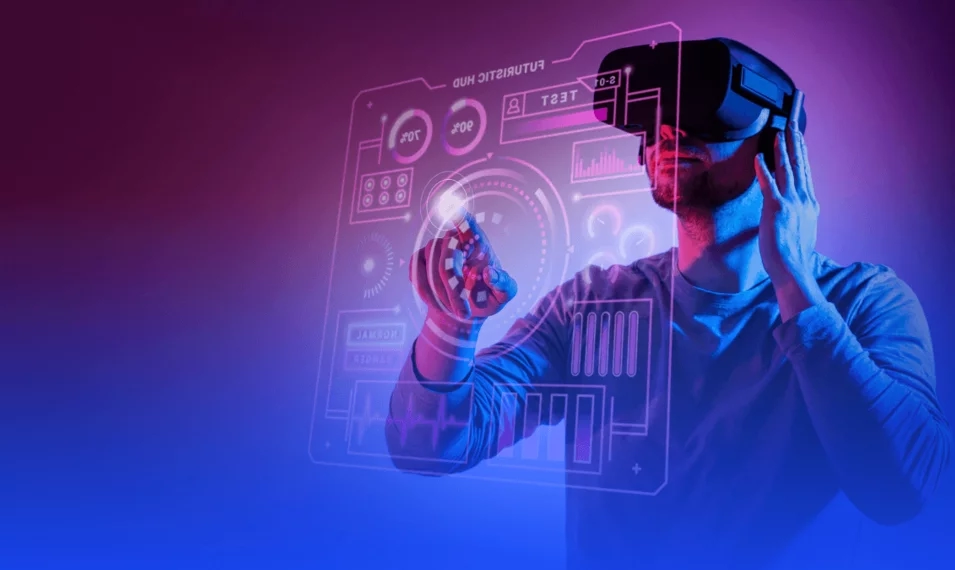
Global , Feb 1, 2022
Business trend predictions for 2022
Logicalis Group CEO Bob Bailkoski, sat down with us and talked us through his top three predictions for the year ahead. Find out what they are ...

Global , Jan 26, 2022
CIOs spending more time on innovation than ever before
CIOs are spending more time on innovation, with three quarters stating they have increased innovation efforts, according to the 2021 Global CIO Survey from Logicalis

, Feb 12, 2021
Scaling up health workers remote working by implementing Azure
Peninsula Health turned to Logicalis for assistance with migrating to a cloud facilitated environment before the pandemic emerged, however as the global situation worsened the need to make some rapid and drastic decisions became very clear. The fast reactions of the Peninsula Health and Logicalis teams meant that staff were able to work remotely safely with secure access to sensitive information.

EMEA , Dec 18, 2020
Logicalis Group appoints Michael Chanter as Chief Operating Officer
London, 18th December 2020 – Logicalis, a leading international IT solutions and managed service provider today announces that Michael Chanter is making the transition from his current role as CEO of Thomas Duryea Logicalis in Australia, to Chief Operating Officer of Logicalis Group.

, Mar 18, 2020
Covid-19: Logicalis Business Continuity Plan
Since the first cases of the coronavirus appeared on the world stage, we’ve been monitoring the spread of the disease worldwide and proactively implementing procedures to minimize the effects to our employees, customers, partners and the society at large.

Global , Mar 5, 2020
Logicalis Awarded Microsoft Azure Expert Managed Service Provider Status
Logicalis Group has today announced it has achieved Microsoft Azure Expert Managed Services Provider (MSP) status, one of only 65 firms globally to achieve such accreditation out of more than 60,000 cloud partners.

, Feb 19, 2020
Businesses struggle to realise benefits of emerging technologies
Enterprises’ use of emerging technologies is on the rise around the world, but many are failing to capitalise on its benefits according to the 2019 Global CIO Survey from Logicalis, a global provider of IT solutions.
, Mar 1, 2019
MicroStrategy names Logicalis EU Partner of the Year
Logicalis, the international IT solutions and managed services provider, has been named Europe Partner of the Year by MicroStrategy® Incorporated.
Global , Sep 1, 2016
Logicalis UK & Paxata Enter Into First-in-Market Partnership
Partnership transforms customer’s data processing and automation for improved data analytics and business intelligence.
, May 23, 2016
Logicalis Europe Announces Membership of Global Strategic Foresight Initiative
Logicalis Europe Becomes First Corporate User of Unlocking Foresight Know How (UFKH) – Chris Gabriel, Chief Digital Officer Europe Joins UFKH Advisory Board.
Global , Nov 16, 2015
Bob Bailkoski appointed as Logicalis Chief Financial Officer
London, 16th November 2015 – Logicalis, the international IT solutions and managed services provider, today announced Bob Bailkoski as its new Chief Financial Officer from 16 November 2015. About Logicalis Logicalis is an international IT solutions and managed services provider with a breadth of knowledge and expertise in communications and collaboration; data centre and cloud services; and managed services. For more information, visit www.logicalis.com
, Jul 14, 2015
Logicalis US Healthcare
Solutions Forges Strategic Partnership
with
Ascendian Healthcare Consulting to Drive Change in Healthcare Imaging
Solution Provider Reveals Seven Reasons Healthcare CIOs Avoid Thinking about Medical Imaging.
, Jun 9, 2015
Logicalis Europe Awarded NetApp International Star Partner Status
Logicalis has met the most stringent requirements on sales, pre-sales and post sales competencies around the entire NetApp product portfolio.
, May 6, 2015
Logicalis UK Acquires Leading Provider Of Analytics Solutions
The transaction is in line with Logicalis’ go to market strategy, and desire to establish itself as a driving force in the emerging digital markets driven by social, mobile, analytics and cloud technologies (SMAC).
, Apr 11, 2014
Logicalis positioned as trusted SDN technology and business advisor in IDC MarketScape report
Managed services specialist is a ‘contender’ in IDC MarketScape Report focused on network virtualization and SDN.
, Feb 11, 2014
Logicalis US Wins 2014 IBM Beacon Award in Outstanding Competitive Solution Category
IBM Beacon Awards Recognize IBM Business Partners for Driving Business Value with Smart, Innovative Solutions
